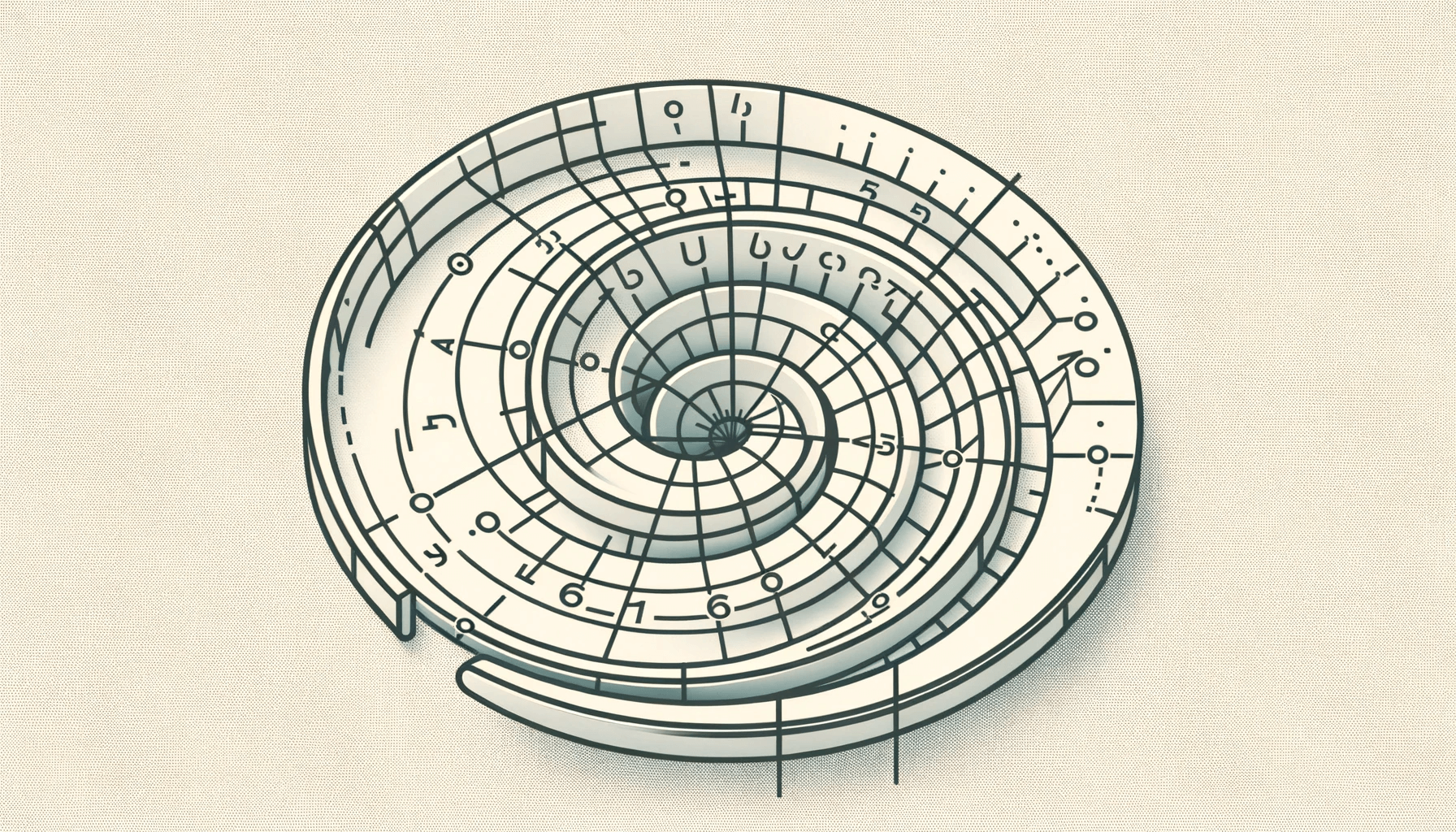A Spiral Curve Deflection Angle Calculator is a specialized tool used in civil engineering to calculate the deflection angle for spiral curves, particularly in road and railway design. Spiral curves, also known as transition curves, provide a gradual transition between a straight path (tangent) and a circular curve, allowing vehicles to adjust to the curvature smoothly without sudden changes in direction. The deflection angle is critical in determining the proper alignment of the spiral curve, ensuring safety, comfort, and efficiency in transportation design.
Understanding Spiral Curves
Spiral curves are commonly used in highway and railway design to transition between a tangent (straight section) and a circular curve. These curves help vehicles gradually adjust to the change in curvature, reducing passengers’ lateral acceleration and minimizing wear on the road or track.
- Tangent: The straight section of the path where no curvature is present.
- Circular Curve: The section of the path where a constant radius of curvature is maintained.
- Spiral Curve: The transitional section between the tangent and the circular curve, where the radius of curvature changes gradually.
Deflection Angle in Spiral Curves
The deflection angle is the angle by which the vehicle’s path is deflected as it moves along the spiral curve. It is crucial in determining the curve’s alignment and ensuring that the transition between the tangent and the circular curve is smooth and safe.
How Does the Spiral Curve Deflection Angle Calculator Work?
- Input Parameters: The calculator requires several key inputs to compute the deflection angle. These include:
- Length of the Spiral (Ls): The total length of the spiral curve, usually in meters or feet.
- The radius of the Circular Curve (R): The radius of the circular curve that the spiral connects to, also in meters or feet.
- Spiral Angle (θs): The angle at the end of the spiral curve relative to the tangent, usually in degrees.
- Degree of Curve (D): The curvature of the circular curve is often used in road and railway engineering.
- Calculate the Deflection Angle: Using these inputs, the calculator applies specific geometric and trigonometric formulas to determine the deflection angle. The general approach involves calculating the spiral length, determining the tangent offset, and using these to find the deflection angle.
- The deflection angle (Δ) can be approximated using the following formula:
- Δ = (Ls / 2R) * (Ls / R) + (θs / 2)
- Where:
- Δ is the deflection angle.
- Ls is the length of the spiral.
- R is the radius of the circular curve.
- θs is the spiral angle.
- This formula accounts for the gradual increase in curvature along the spiral. It provides the angle by which the path is deflected as the vehicle moves along the curve.
- Output the Deflection Angle: The calculator then displays the deflection angle in degrees, which can be used to set out the spiral curve on-site or in a design plan.
Why Use a Spiral Curve Deflection Angle Calculator?
- Precision in Design: Spiral curves require precise calculations to ensure a smooth transition between straight and curved sections of a road or railway. The calculator ensures accurate alignment, minimizing the risk of design errors.
- Safety: Accurate deflection angles are essential for protection, as they ensure that vehicles can smoothly navigate the transition between straight and curved paths without experiencing sudden changes in direction, which could lead to accidents.
- Comfort: Gradual changes in curvature, achieved through correct deflection angles, improve passenger comfort by reducing the lateral forces experienced during the transition between straight and curved paths.
- Efficiency in Construction: By providing exact deflection angles, the calculator aids in the efficient construction and layout of roads and railways, ensuring that the infrastructure meets design specifications and safety standards.
Example Scenario
Imagine an engineer designing a railway track where a straight section needs to transition into a circular curve with a radius of 500 meters. The length of the spiral curve is intended to be 100 meters, and the desired spiral angle at the end of the curve is 5 degrees. Using the Spiral Curve Deflection Angle Calculator, the engineer inputs these values:
- Length of Spiral (Ls): 100 meters
- The radius of Circular Curve (R): 500 meters
- Spiral Angle (θs): 5 degrees
The calculator processes these inputs and determines the deflection angle to be approximately:
Δ ≈ (100 / 2 * 500) * (100 / 500) + (5 / 2) = 2.5 + 2.5 = 5 degrees
This calculated deflection angle of 5 degrees ensures that the transition from the tangent to the circular curve is smooth and aligns perfectly with the design requirements.
Conclusion
A Spiral Curve Deflection Angle Calculator, is an invaluable tool for civil engineers and transportation designers involved in road and railway construction. It provides precise deflection angles, ensuring smooth transitions between straight and curved sections of a path. This precision is critical for safety, passenger comfort, and the overall efficiency of the transportation system. Using this calculator, engineers can confidently design spiral curves that meet the stringent requirements of modern infrastructure projects, ultimately contributing to safer and more reliable transportation networks.
Spiral Curve Deflection Angle formula
The variables used in the formula are:
i – Tangent deflection angle to any point on the curve
L – Length of spiral from tangent to any point
Ls – Length of spiral
R – Radius of Simple Curve
The calculator uses the formula for calculating the deflection angle i of the spiral or transition curve based on the given values of L, R, and Ls.


